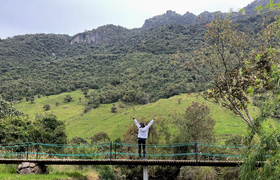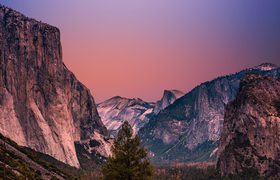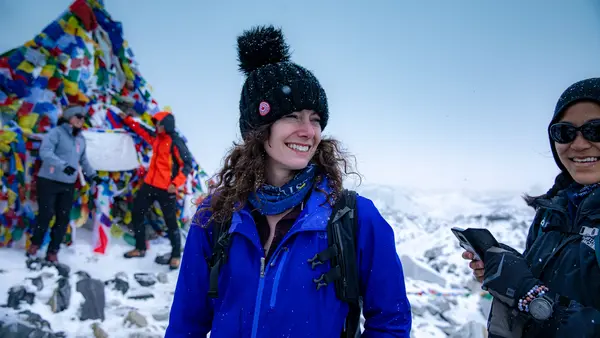
Everest ready: what to pack for a Nepal trekking trip
Get prepared for Nepal’s trekking trails with this packing list that balances warmth, comfort, and essential gear for every hiker
Thinking about trekking in Nepal? Whether you’re dreaming of the iconic Everest Base Camp trail or the breathtaking Annapurna Circuit, one thing’s for sure: your adventure is as good as what you bring along. A smart, well-thought-out packing list can make the difference between an unforgettable journey and a tough slog weighed down by the wrong gear. Before you lace up your boots, let’s dive into your essential packing list for trekking in Nepal, because packing light yet wisely is the real secret to savouring every step of those Himalayan trails.
Essential packing list for trekking in Nepal
Putting together your essential packing list for trekking in Nepal is all about striking the right balance between comfort, practicality, and not overloading your backpack. Start with sturdy, well-broken-in boots (your feet will thank you after those long Himalayan trails) and a reliable backpack that won’t quit on you halfway up a mountain.
Layered clothing is a must because Nepal’s weather can go from sunny to snow globe in a matter of hours. A warm sleeping bag keeps those chilly teahouse nights cozy, while a refillable water bottle plus purification tablets or a filter keeps you hydrated and healthy. Don’t skip the headlamp (great for both late-night reading and midnight bathroom dashes), trekking poles to give your knees a break, and a compact first-aid kit just in case. With these core items packed, you're ready to trek smarter, not harder.
Experience it for yourself on: Everest Base Camp Trek
Daypack vs. duffel
When it comes to carrying your gear in Nepal, the big question is whether you should take a daypack or a duffel. The answer depends on how you like to trek. A sturdy duffel bag is often the go-to if you’re hiring a porter because these bags are durable and roomy and can swallow up everything from your sleeping bag to extra layers. The downside? You won’t have it with you during the day, so you need a smaller pack for essentials on the trail.
A daypack, on the other hand, keeps everything within arm’s reach — snacks, water, camera, sunscreen — but that also means you’re the one hauling it up every incline. Many trekkers find the sweet spot is a combo: a duffel for the bulk of your gear and a well-fitted daypack for the items you actually need while walking. That way, you travel light on the trail without sacrificing comfort at camp.

How many layers should you pack?
If trekking in the Himalayas has a golden rule, it’s to master the art of layering. Nepal’s mountain weather has a flair for the dramatic. You can start the morning in bright sunshine, be caught in a chilly breeze by lunch, and wrap up the day with frosty air settling over the teahouses. Aim for three core layers: a moisture-wicking base layer to keep you dry, an insulating mid-layer (think fleece or down jacket) for warmth, and a waterproof outer shell to shield you from wind and sudden showers. The beauty of this system is flexibility — you can peel off when the sun’s blazing and pile on when the temperature drops. Pack smart, and you're ready to handle the Himalayas’ mood swings.
What to wear while trekking in Nepal
When trekking in Nepal, the weather is as unpredictable as the terrain, and it shifts dramatically with altitude. At lower elevations, wear breathable, moisture-wicking clothes that keep you cool and dry while you trek through lush valleys. As you climb higher into the mountains, you need to start adding layers to battle the chill. A snug base layer of merino wool or synthetic fabric helps regulate your body temperature without making you feel like a walking oven. Up top, a light fleece or down jacket keeps the cold at bay, and a windproof outer shell is your best friend when those mountain winds pick up.
Don’t forget accessories — a warm hat, gloves, and sunglasses are lifesavers at higher altitudes, while sturdy socks and breathable hiking boots keep your feet happy after days on the trails. Dressing smart isn’t just about comfort; it’s about staying energized, protected, and enjoying every step of your Nepal trek.
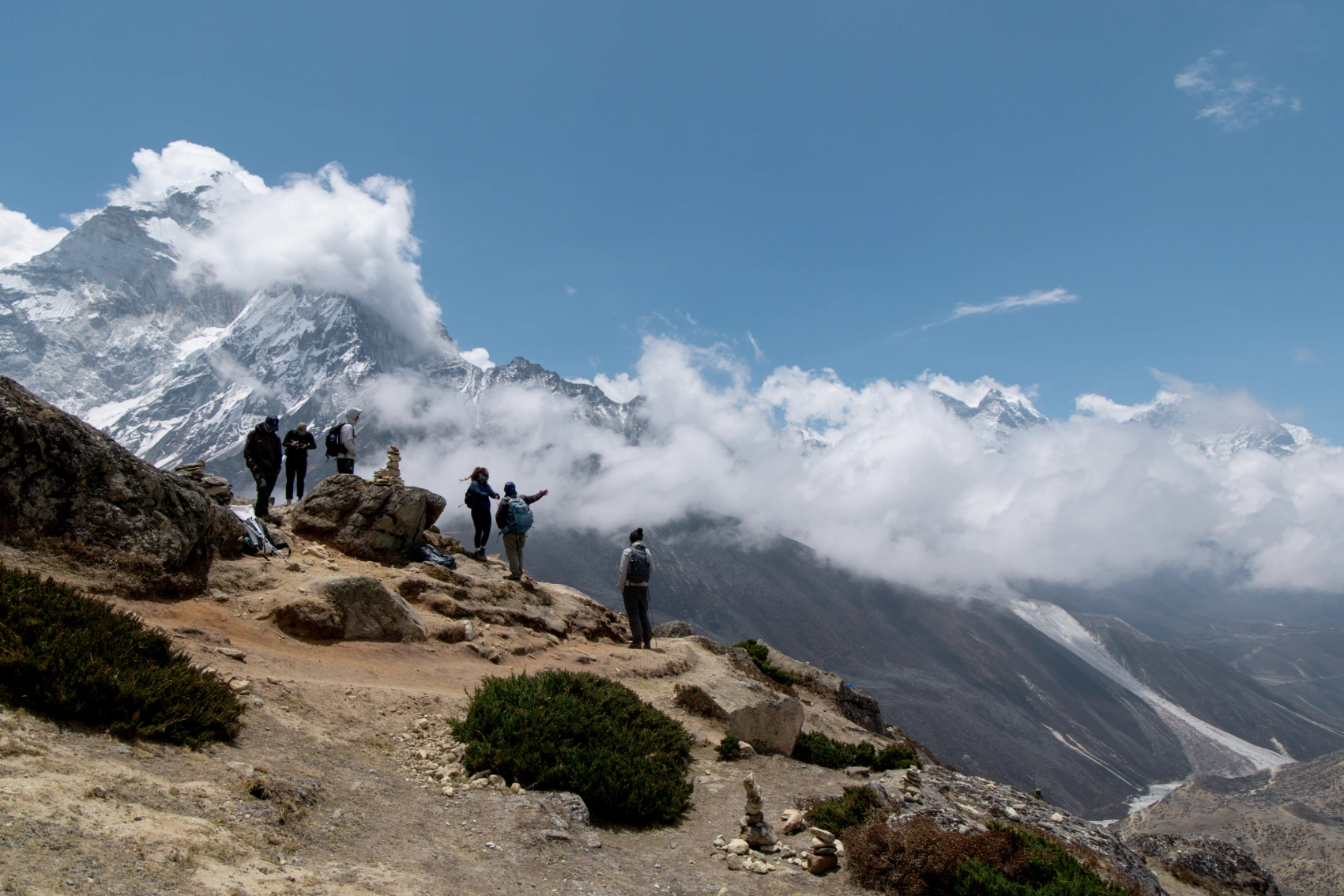
Experience it for yourself on: Annapurna Sanctuary
Layering for cold weather
When the Himalayan chill sets in, layering for cold weather isn’t just smart — it’s survival with style. Start with a snug base layer to keep sweat off your skin (nobody wants frozen, damp clothes). Add a cozy mid-layer, such as a fleece or a lightweight down jacket, to trap heat without weighing you down. Finally, top it off with a windproof, waterproof outer layer that laughs in the face of snow, sleet, and gusty mountain winds. The magic of layering is flexibility: zip, unzip, peel, or pile on as the day’s weather swings wildly. With the right combo, you stay warm, dry, and comfortable, leaving you free to focus on the stunning Himalayan views instead of shivering through them.
Clothing for monsoon or shoulder season treks
Trekking in Nepal during the monsoon or shoulder season calls for clothes that can keep up with sudden downpours and muddy trails. Think waterproof jackets and pants, quick-dry shirts, and breathable layers that won’t cling to you when the rain hits. A good pair of water-resistant hiking boots and breathable, quick-drying socks can be lifesavers when streams swell and trails get slippery. Don’t forget a lightweight rain cover for your backpack because soggy gear is a trekker’s ultimate nightmare. The right gear means more comfort and less worry — pack smart, stay dry, and you can make the most of the lush, vibrant landscapes these wet seasons bring, instead of slogging through a soggy, uncomfortable trek.
Best gear for trekking in Nepal
Think of your Nepal trekking gear as your survival kit for comfort, safety, and a little peace of mind on the trail. A reliable backpack with padded straps keeps your essentials close without straining your shoulders, and trekking poles are a godsend for steep climbs and rocky descents. Don’t underestimate a good headlamp — perfect for early starts, late arrivals, or reading in dim teahouses. Add a compact first-aid kit, a refillable water bottle with a filter, and a multitool or pocket knife, and you’re set to tackle the mountains with confidence. With the right gear, the unpredictable trails of Nepal feel less like a challenge and more like an adventure you’re fully equipped to take on.
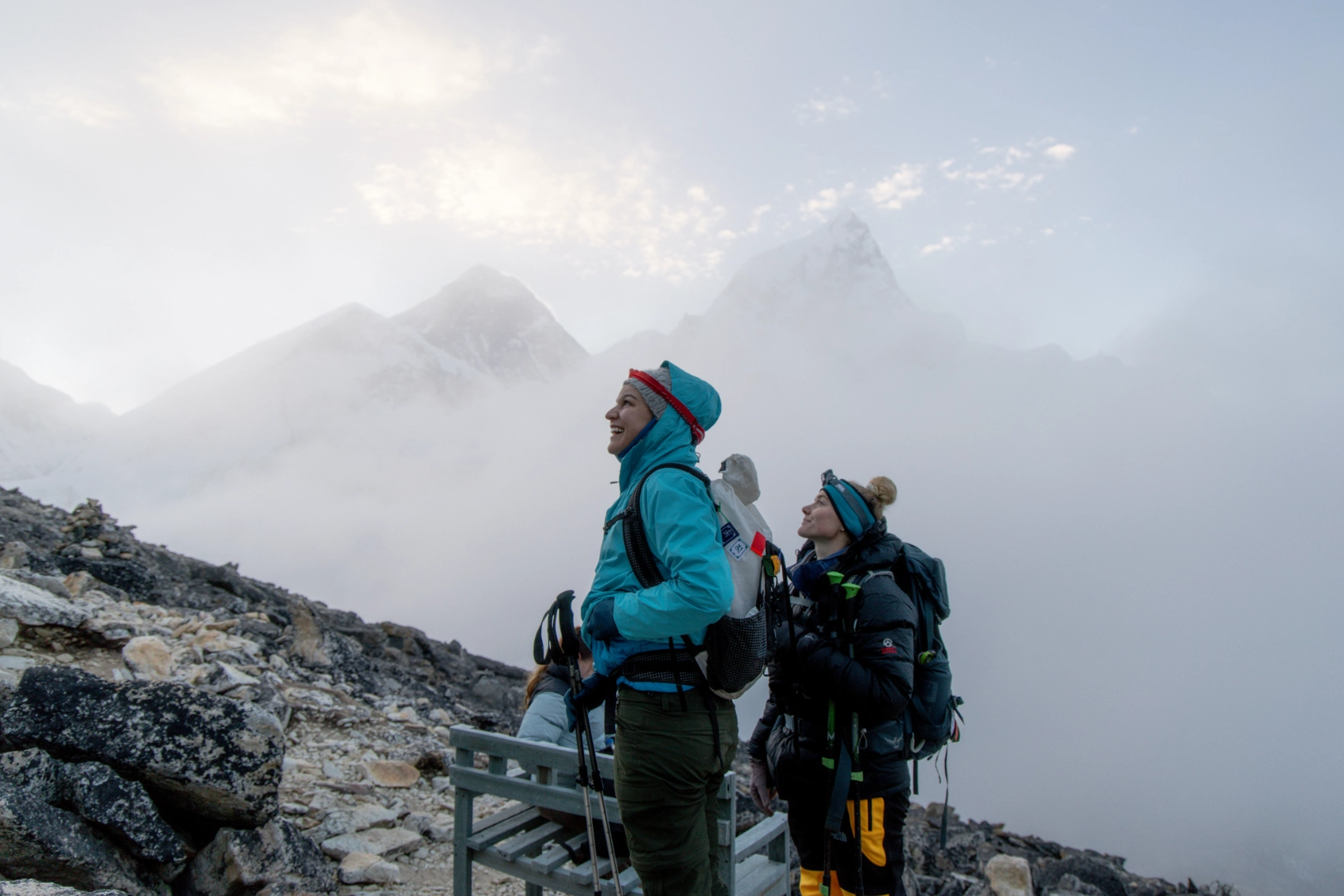
Experience it for yourself on: Annapurna Circuit Trek
Lightweight vs. heavy gear
Choosing between lightweight and heavy gear is one of those decisions that can make or break your Nepal trek. Lightweight gear is a dream on long trails: easy to carry, quick to dry, and less punishing on your shoulders during those epic climbs. The tradeoff? It can sometimes feel less durable or not as warm in harsh conditions.
Heavy gear, on the other hand, offers extra protection, insulation, and sturdiness, but every ounce counts when you’re ascending steep Himalayan passes. The trick is finding a balance: pack as light as possible without sacrificing safety or comfort, and focus on multipurpose items that give you the best of both worlds. That way, your trek feels effortless, and you’ve got the energy to soak in the breathtaking scenery rather than hauling unnecessary weight.
Recommended gear brands
When it comes to recommended brands for trekking poles, backpacks, and sleeping bags, sticking with trusted names can make a huge difference on the trail. For trekking poles, brands like Black Diamond and Leki are favourites for their durability and lightweight design. Backpacks from Osprey, Deuter, and Gregory offer comfort and smart organization, so your gear stays exactly where you need it. For sleeping bags, Marmot, Mountain Hardwear, and The North Face are go-to choices for warmth, compressibility, and reliability in cold Himalayan nights. Investing in tried-and-true gear not only makes your trek smoother but also gives you peace of mind.
Footwear for Nepal trekking
Your boots can make or break your Nepal trekking experience — literally. Sturdy, well-fitting hiking boots protect your feet from rocky trails, slippery paths, and long days of uphill climbs, while keeping blisters and sore arches at bay. Lightweight trail shoes might be tempting for short hikes, but for multi-day treks, such as Everest Base Camp or the Annapurna Circuit, ankle support and durable soles are non-negotiable. Pair them with sweat-resistant socks, and don’t forget a comfortable backup pair for evenings in the teahouses. The right footwear keeps you moving confidently and comfortably, letting you focus on the stunning Himalayan scenery instead of every achy step.
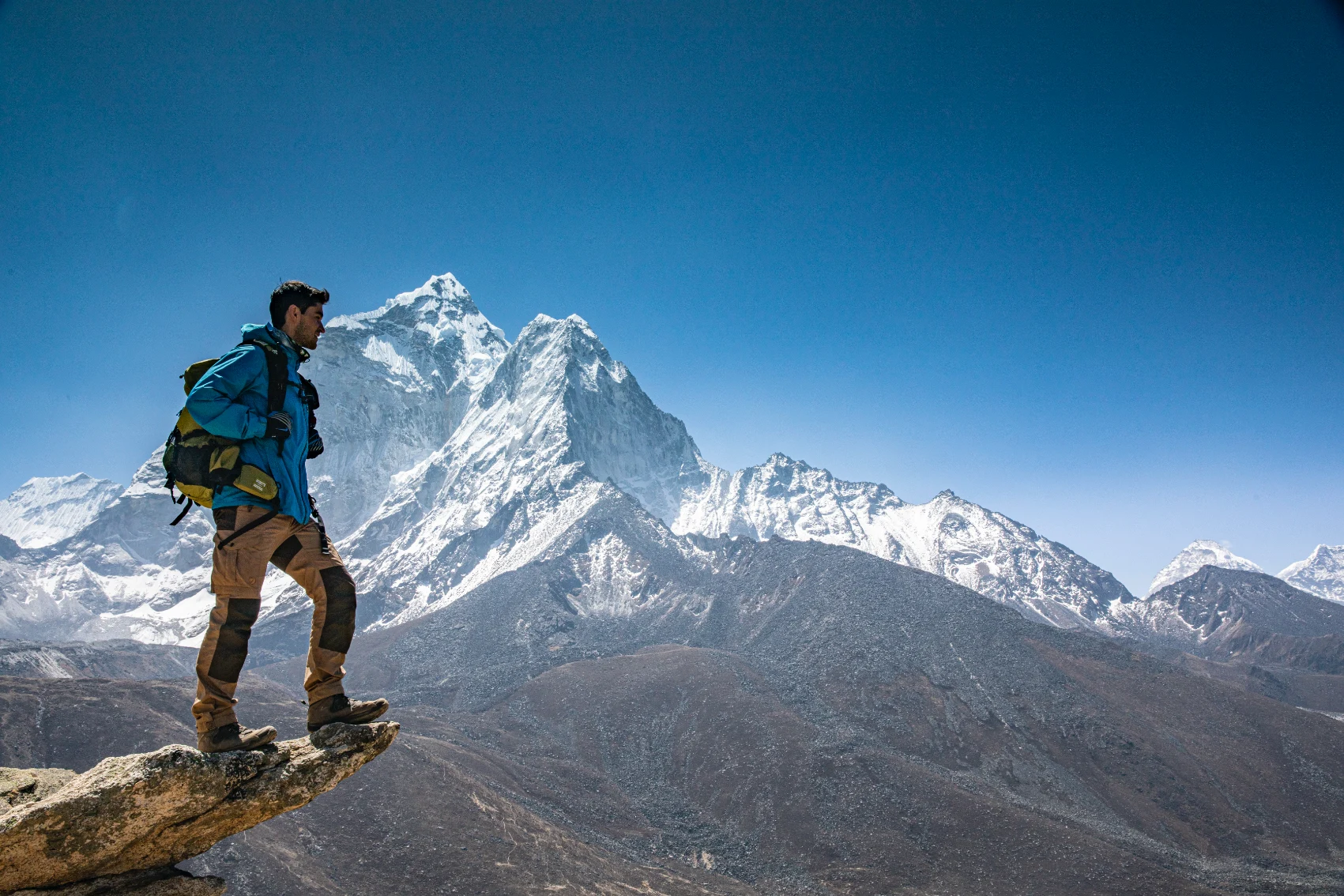
How to break in your trekking boots
Breaking in your trekking boots before a Nepal trek isn’t just a good idea — it’s essential if you want to avoid blisters, sore feet, and regrettable early mornings. Start by wearing them around the house and then on short walks, gradually increasing the distance to mimic trail conditions. Pair them with the socks you plan to use on the trek to ensure a perfect fit, and don’t be afraid to bend, flex, and even scuff them a little so they soften up. A little patience before your trip saves you from painful blisters later, letting you tackle rocky paths, steep climbs, and muddy descents with confidence. You want to be able to focus on soaking in the Himalayan views instead of limping along.
Waterproof shoes: are they necessary?
Deciding whether to bring waterproof shoes on a Nepal trek depends on the season and terrain, but they can be a lifesaver in the right conditions. During the monsoon season or on trails that cross streams and muddy paths, waterproof boots keep your feet dry, warm, and blister-free letting you focus on the adventure instead of soggy socks. On drier treks, they’re less critical, and breathable shoes might even feel more comfortable on hot days. The key is balance: choose footwear that protects you from wet conditions without sacrificing comfort or ventilation, so every step feels secure, supported, and ready for whatever the trail throws at you.
Must-have trekking accessories
The right extras can turn a tough day into a manageable (and even enjoyable) adventure. A reliable water purification system keeps you hydrated and healthy on long stretches between streams, while a headlamp is invaluable. Trekking poles save your knees and add stability on steep ascents and rocky descents, making every step feel a little easier. Don’t forget items like sunglasses for the sun-soaked passes, a hat, and a compact first-aid kit. These little additions aren’t just convenient; they’re essential tools that help you tackle Nepal’s rugged trails with comfort, confidence, and energy to spare.
Toiletries and personal items to pack
Even in the middle of the Himalayas, toiletries and personal items can make a huge difference in your comfort and wellbeing. Sunscreen and lip balm protect your skin from the intense mountain sun, while insect repellent keeps those pesky mosquitoes and flies at bay. Pack your personal medications, a small first-aid kit, and daily hygiene essentials you can’t live without — think toothpaste, wet wipes, and hand sanitizer. A few thoughtful items go a long way when you’re trekking through remote villages and overnighting in teahouses, helping you stay healthy and comfortable.
Tips for Everest Base Camp and Annapurna
Packing for Everest Base Camp vs. the Annapurna Circuit requires a slightly different approach, thanks to their unique climates and trail conditions. When it comes to gear differences, the variations mostly come down to trek difficulty, altitude, and weather conditions. Longer, more strenuous days on Everest require a well-fitted daypack with hydration and snacks, while Annapurna’s slightly gentler terrain allows for lighter loads. Adjusting gear to match the trek’s altitude, weather patterns, and daily challenges ensures comfort, safety, and energy to fully enjoy the scenery.
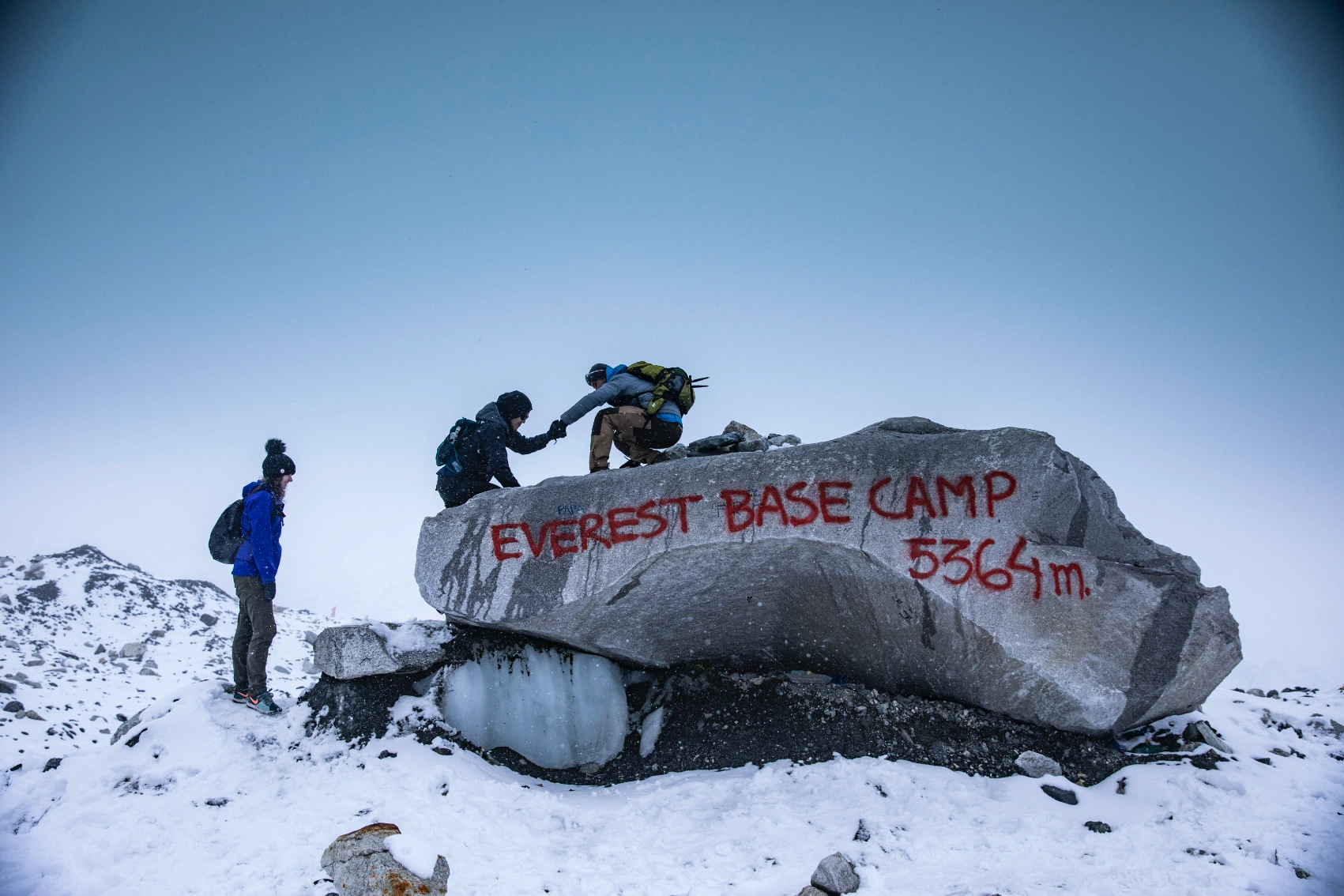
Differences in gear for Annapurna vs. Everest
Both treks benefit from a smart daypack, water purification, and a small first-aid kit, but tailoring your gear to each route ensures you stay comfortable, safe, and free to focus on the jaw-dropping Himalayan scenery.
Everest Base Camp is higher and colder, so you need extra insulation, including thicker down jackets, thermal layers, and a sleeping bag rated for sub-zero nights, as well as stronger sun protection for the high-altitude glare. The trails are often rocky and steep, making sturdy, supportive boots and trekking poles essential. Lightweight trekking gear is key, but the rocky terrain and long ascents demand extra support.
The Annapurna Circuit tends to be lower in elevation but wetter, especially in the monsoon or shoulder seasons, so quick-dry clothing, a reliable waterproof jacket, and gaiters are lifesavers on muddy or rainy sections.
Renting vs. buying gear
When planning your trek, deciding whether to rent or buy gear can save money and hassle, but each option has its tradeoffs. Renting in Nepal, especially in Kathmandu or Pokhara, is convenient and cost-effective for bulky items like down jackets, sleeping bags, and trekking poles, particularly if you don’t want to haul them on flights. Buying gear, on the other hand, gives you the comfort of new, perfectly fitted items and can be worth it for high-quality boots, base layers, and personal gear you’ll use again. Many trekkers combine both approaches — rent the heavy or infrequently used items in Nepal and bring key personal gear from home.
What not to pack for a Nepal trek
Knowing what not to pack for a Nepal trek is just as important as knowing what to bring. Heavy, bulky items like multiple pairs of shoes, extra clothing you won’t need, or oversized electronics can weigh you down and make every uphill step feel harder. Expensive jewellery or valuables aren’t just unnecessary; they’re risky in remote areas. Even large guidebooks or non-essential gadgets can clutter your backpack and steal precious space from truly important gear like layers, water purification, and first-aid supplies. Stick to lightweight, multipurpose items and leave the extras at home. Travelling smart means less weight on your shoulders, more energy on the trail, and fewer headaches, so you can fully enjoy the breathtaking Himalayan scenery without being bogged down by unnecessary baggage.
